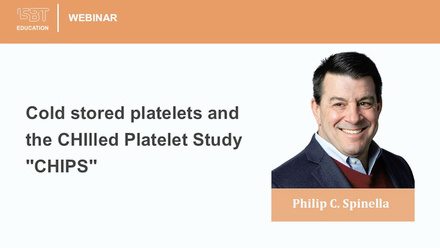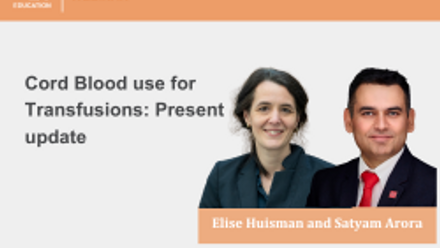Restrictive or Liberal Transfusion Strategy in Myocardial Infarction and Anemia
Jeffrey L Carson1, Maria Mori Brooks1, Paul C Hébert1, Shaun G Goodman1, Marnie Bertolet1, Simone A Glynn1, Bernard R Chaitman1, Tabassome Simon1, Renato D Lopes1, Andrew M Goldsweig1, Andrew P DeFilippis1, J Dawn Abbott1, Brian J Potter1, Francois Martin Carrier1, Sunil V Rao1, Howard A Cooper1, Shahab Ghafghazi1, Dean A Fergusson1, William J Kostis1, Helaine Noveck1, Sarang Kim1, Meechai Tessalee1, Gregory Ducrocq1, Pedro Gabriel Melo de Barros E Silva1, Darrell J Triulzi1, Caroline Alsweiler1, Mark A Menegus1, John D Neary1, Lynn Uhl1, Jordan B Strom1, Christopher B Fordyce1, Emile Ferrari1, Johanne Silvain1, Frances O Wood1, Benoit Daneault1, Tamar S Polonsky1, Manohara Senaratne1, Etienne Puymirat1, Claire Bouleti1, Benoit Lattuca1, Harvey D White1, Sheryl F Kelsey1, P Gabriel Steg1, John H Alexander1; MINT Investigators
Affiliations
1From the Department of Medicine, Rutgers Robert Wood Johnson Medical School, New Brunswick, NJ (J.L.C., W.J.K., H.N., S.K.); the Departments of Epidemiology and Biostatistics, School of Public Health, University of Pittsburgh (M.M.B., M.B., S.F.K.), and the Department of Pathology, Division of Transfusion Medicine, University of Pittsburgh School of Medicine (D.J.T.) - both in Pittsburgh; the Bruyere Research Institute, University of Ottawa (P.C.H.), and the Clinical Epidemiology Program, Ottawa Hospital Research Institute (D.A.F.), Ottawa, St. Michael's Hospital, University of Toronto, Toronto (S.G.G.), Canadian VIGOUR Centre, University of Alberta (S.G.G.), and the Department of Medicine, Grey Nuns Hospital (M.S.), Edmonton, CHUM Research Centre (B.J.P.), the Departments of Anesthesiology and Medicine, Division of Critical Care, Centre Hospitalier de l'Université de Montréal, Innovation and Evaluation Hub, Centre de Recherche du CHUM (F.M.C., P.C.H.), and the Department of Anesthesiology and Pain Medicine, Université de Montréal (F.M.C.), Montreal, the Department of Medicine, McMaster University, Hamilton, ON (J.D.N.), the Division of Cardiology and Centre for Cardiovascular Innovation, Vancouver General Hospital and University of British Columbia, Vancouver (C.B.F.), and Centre Hospitalier Universitaire (CHU) de Sherbrooke, Université de Sherbrooke, Sherbrooke, QC (B.D.) - all in Canada; the National Heart, Lung, and Blood Institute, Bethesda, MD (S.A.G.); St. Louis University School of Medicine, St. Louis (B.R.C.); FACT (French Alliance for Cardiovascular Trials) (T.S., G.D., P.G.S.), Service de Pharmacologie, Plateforme de Recherche Clinique de l'Est Parisien, Assistance Publique-Hôpitaux de Paris (AP-HP), Hôpital Saint Antoine, Sorbonne Université (T.S.), Université Paris-Cité, INSERM Unité 1148 and AP-HP, Hôpital Bichat (G.D., P.G.S.), Sorbonne Université, ACTION Study Group, INSERM UMRS1166, Hôpital Pitié-Salpêtrière AP-HP (J.S.), and AP-HP, Hôpital Européen Georges Pompidou, Department of Cardiology, Université de Paris (E.P.), Paris, Hôpital Pasteur, Service de Cardiologie, CHU Nice, Nice (E.F.), University Hospital of Poitiers, Clinical Investigation Center (INSERM 1204), Cardiology Department, Poitiers (C.B.), and Nimes University Hospital, Montpelier University, ACTION Group, Nimes (B.L.) - all in France; Duke Clinical Research Institute, Duke University, Durham (R.D.L., J.H.A.), and the Department of Medicine, WakeMed Health and Hospitals, Winston-Salem (F.O.W.) - both in North Carolina; Brazilian Clinical Research Institute, Sao Paulo (R.D.L., P.G.M.B.S.); the Department of Medicine, Baystate Medical Center, Springfield (A.M.G.), and the Department of Pathology (L.U.) and Richard A. and Susan F. Smith Center for Outcomes Research in Cardiology (J.B.S.), Beth Israel Deaconess Medical Center, Harvard Medical School, Boston - both in Massachusetts; the University of Nebraska Medical Center, Omaha (A.M.G.); the Department of Medicine, Vanderbilt University Medical Center, Nashville (A.P.D.); Lifespan Cardiovascular Institute and the Department of Medicine, Division of Cardiology, Alpert Medical School of Brown University, Providence, RI (J.D.A.); the Department of Medicine, NYU Langone Health System (S.V.R.), and the Department of Medicine, Montefiore Medical Center (M.A.M.), New York, and the Department of Cardiology, Westchester Medical Center, Valhalla (H.A.C.) - all in New York; the Department of Medicine, University of Louisville, Louiville, KY (S.G.); UChicago AdventHealth Heart and Vascular (M.T.) and the Department of Medicine, University of Chicago Medicine (T.S.P.) - both in Chicago; and Green Lane Coordinating Center, Auckland, New Zealand (C.A., H.D.W.).
PMID: 37952133 PMCID: PMC10837004 (available on 2024-06-28) DOI: 10.1056/NEJMoa2307983
Abstract
Background:
A strategy of administering a transfusion only when the hemoglobin level falls below 7 or 8 g per deciliter has been widely adopted. However, patients with acute myocardial infarction may benefit from a higher hemoglobin level.
Methods:
In this phase 3, interventional trial, we randomly assigned patients with myocardial infarction and a hemoglobin level of less than 10 g per deciliter to a restrictive transfusion strategy (hemoglobin cutoff for transfusion, 7 or 8 g per deciliter) or a liberal transfusion strategy (hemoglobin cutoff, <10 g per deciliter). The primary outcome was a composite of myocardial infarction or death at 30 days.
Results:
A total of 3504 patients were included in the primary analysis. The mean (±SD) number of red-cell units that were transfused was 0.7±1.6 in the restrictive-strategy group and 2.5±2.3 in the liberal-strategy group. The mean hemoglobin level was 1.3 to 1.6 g per deciliter lower in the restrictive-strategy group than in the liberal-strategy group on days 1 to 3 after randomization. A primary-outcome event occurred in 295 of 1749 patients (16.9%) in the restrictive-strategy group and in 255 of 1755 patients (14.5%) in the liberal-strategy group (risk ratio modeled with multiple imputation for incomplete follow-up, 1.15; 95% confidence interval [CI], 0.99 to 1.34; P = 0.07). Death occurred in 9.9% of the patients with the restrictive strategy and in 8.3% of the patients with the liberal strategy (risk ratio, 1.19; 95% CI, 0.96 to 1.47); myocardial infarction occurred in 8.5% and 7.2% of the patients, respectively (risk ratio, 1.19; 95% CI, 0.94 to 1.49).
Conclusions:
In patients with acute myocardial infarction and anemia, a liberal transfusion strategy did not significantly reduce the risk of recurrent myocardial infarction or death at 30 days. However, potential harms of a restrictive transfusion strategy cannot be excluded. (Funded by the National Heart, Lung, and Blood Institute and others; MINT ClinicalTrials.gov number, NCT02981407.).



















